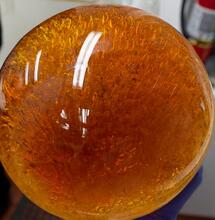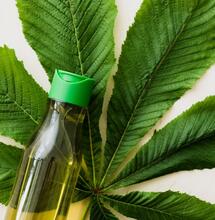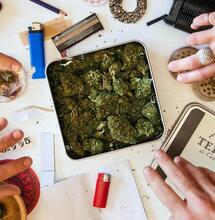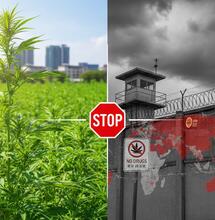Everything About Cannabis Decarboxylation
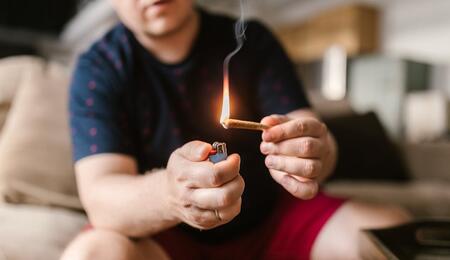
Delta-9-tetrahydrocannabinol (Δ-9 THC) is formed from THCA through a process called decarboxylation (the removal of carbon dioxide). In this article, we break down the science behind cannabis decarboxylation.
What is Decarboxylation and Why Is It Important?
As a Cannabis plant grows, light hitting the leaves is collected by chlorophyll. Part of this energy is stored for later use, and part is used to split water (H2O) molecules into free oxygen gas (O2), and hydrogen (H); this is how plants give off oxygen (O2). Plants absorb carbon dioxide (CO2), and as part of a process in photosynthesis known as ‘carboxylation’, or the addition of CO2, carboxylic acids are formed in part using the freed hydrogen (H).
These acids are groups of carbon, oxygen, and hydrogen atoms, and one of the most important to vipers is delta-9-tetrahydrocannabinol carboxylic acid (also known as tetrahydrocannabinolic acid or THCA). Other cannabinoids also first take shape as acid forms, such as CBD-carboxylic acid (CBDA) for cannabidiol (CBD), and CBN-carboxylic acid (CBNA) for cannabinol (CBN) and follow the same process.
THCA, CBDA and CBNA, and Their Effects
While THCA does appear to have some beneficial impact, it does not induce the ‘high’ effects generally desired by smokers. While the plant is living, much of the THC in the plant is in THCA form. This is why consuming live, green plant material has a greatly reduced effect. As long as the extra CO2 is attached to the THC, the potency is hindered.
The good news about decarboxylation is that dehydration and heat speed the conversion. At least part of the reason that well-cured buds are more potent than less- or poorly-cured buds is that more of the THCA has naturally converted to THC, along with the other cannabinoids. Decarboxylation techniques improve uncured Cannabis more than cured Cannabis, as in the latter much of the THCA has already been converted into THC.
How to Properly Cure Cannabis?
To cure Cannabis, it should be allowed to dry until much of the surface moisture has evaporated. A cool, dry, dark location with good circulation is ideal. If the plant material is allowed to remain too wet for too long, it can encourage mold and fungal growth, ruining the product. After the Cannabis has become dry to the touch, there is still moisture inside the interior. Place in a sealed jar, and allow the moisture to wick from the center to the edges, where it will rehydrate, and the buds will appear to become wet again.
Condensation may collect on the inside of the jar, which is why this stage is occasionally called ‘sweating’. It is extremely important that the jar be opened regularly, and this moisture allowed to escape, or mold will almost assuredly develop. Depending on the moisture level, the buds may need to be removed from the jar entirely and allowed to dry. Once the buds are again dry to the touch, they are returned to the jar and resealed. This is repeated as needed, although with practice correct moisture levels become easier to judge, so fewer adjusting cycles are needed.
Decarboxylation is also why Cannabis is often heated in some fashion before or as it is consumed, so another plus point is that most methods of consumption use heat as part of administration. A joint has fire on the end; pipe bowls are lit with lighters; dabs use torches; vapes use a heating coil or very hot air, etc. This can help convert remaining THCA into THC as it is heated.

Decarboxylation of Cannabis Edibles and Tinctures
For edibles or quick tinctures, the Cannabis should undergo a heat treatment as part of the preparation to ensure the THCA has been decarboxylated into THC. A two-stage heating regimen is suggested.
The process to speed up decarboxylation that is heat-based, so particle size comes into play. The smaller the Cannabis is broken up, the more surface area is exposed and the faster the process occurs. Finely-ground Cannabis will decarboxylate faster than buds will in the same environment, so adjust as needed. If the kief has been separated from the rest of the plant matter, it can be treated using the same method, but consider reducing the time as you would for powdered Cannabis.
The object is to first increase dehydration, and not to ‘cook’ the Cannabis, so first warm it to 200º F for ten to twenty minutes or until completely dry. This is a lower starting temperature than many suggest, but it has a benefit; the boiling point of water would by definition cause the water in the plant to boil. At temperatures over the boiling point of water (212º F or 100º C), any excess of moisture in the starting Cannabis will boil, causing damage to the cell membranes by bursting them and in extreme cases causing the Cannabis to resemble cooked spinach. Another benefit to using lower starting temperatures is that they increase the margin for error, and a little extra time makes less difference. Since the temperature is well below the volatile point of the plant oils, it causes less risk from accidental vaporization. The object of this first heating stage is to remove the moisture, so maintain at temperature until well dried.
Once the Cannabis is thoroughly dried, the temperature can be increased to over the boiling point without causing damage. The temperature can be raised to 225º to 240º F for a period of an hour. Since there is little moisture in the plant material, there should be little chance of boiling water, and this is still below the boiling point of the cannabinoids. Conversion of THCA to THC is accelerated, but the time is kept short enough not to encourage too much conversion to THC to CBN by heating it for too long (at least, that's my reasoning).
After the Cannabis has been properly decarboxylated, the THC and other cannabinoids are ready for consumption. The Cannabis can be added to cooking dishes, smoked or vaporized.
Also read on Soft Secrets:


